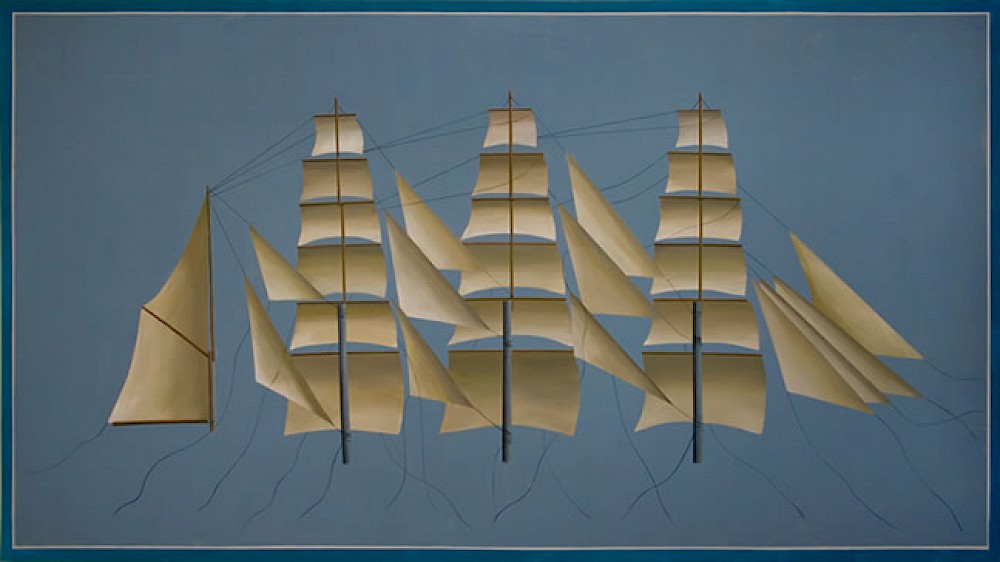The History of Painting and the Philosophy of Movement - By Julio Sanchez- La Nación 8-11-2008.
In San Telmo, just a street each from the other, Alberto Passolini and Fernando Lancellotti present two different ways of relating to the world.
By Julio Sánchez
Another atmosphere pervades just across the street, in Wussmann art gallery, where Fernando Lancellotti presents a series of paintings, objects and installations that go under the name of ‘Quizá no vayas a ninguna parte’ (Perhaps you´re not going anywhere). The exhibit’s theme is movement, in the broadest sense of the term: ranging from the simplest movement to life itself conceived as an archetypical journey. The first work that welcomes the spectator is an acrylic on canvas that represents an elastic bed whose awning contains a slice of nocturnal sky. The image, which can be read as an impossible catapulting jump towards heaven, anchors –like most of the exhibit– in the tradition of surrealist images. Beside it there is a painting of a big open umbrella without a handle, but a strange metal frame seems to weigh it down, counteracting the resistance of the umbrella-parachute. Another painting depicts the complex system of sails of a ship that has no hull. Overhead, right at the other end of the ceiling, almost inadvertently, flies a hot air balloon that has lost its wicker basket.
Everything is like this in Lancellotti’s work, a journey without destiny, a means of transport that doesn’t lead anywhere, and it reaches its height with the video of a hamster running non-stop inside a tiny spinning wheel. To move without advancing might seem illogical to thought, but it didn’t seem so to the medieval monks, who practiced the ‘peregrinato in stabilitate’, that is to say, action without movement, an inward pilgrimage accomplished without leaving the monastery, and which therefore rendered it unnecessary to go on a pilgrimage to the Holy Land —it sufficed to follow the path of monastic perfection. The Oriental equivalent of this concept (though there are differences) is that of ‘non action’, the ‘wu wei’ of the Taoists, who propound non action because the universe takes care of doing what must be done, regardless of individual will. Employing contemporary language, Lancellotti tackles the old theme of the ‘homo viator’, the travelling man, he who is in transit towards his definite abode.
